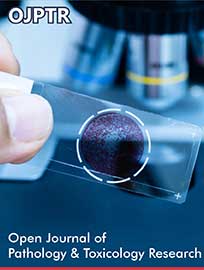 Opinion
Opinion
Esophageal Stricture Secondary to Actinomyces Infection
Ingrid Pinzon* and Keerthi Padooru
Department of Medicine, Emory Johns Creek Hospital, Atlanta
Ingrid Pinzon, Department of Medicine, Emory Johns Creek Hospital, Atlanta, USA
Received Date:January 19, 2022; Published Date:February 09, 2023
Opinion
Esophageal stricture (ES) is a common presentation of dysphagia, ES is an abnormal narrowing of the esophagus. Its usual presentation is difficulty swallowing and has many potential etiologies including malignancy. Upper gastrointestinal endoscopy is often the first-line diagnostic modality offered and allows for therapeutic intervention. Most common causes of ES are long standing gastroesophageal reflux, eosinophilic esophagitis, esophageal cancer, history of radiation therapy and infectious etiologies. Infectious are associate with candida, herpes simplex virus (HSV) and less commonly cytomegalovirus and human immunodeficiency virus. We are presenting a case of actinomyces infection causing esophageal strictures. Actinomyces esophagitis is a rare esophageal infection and cause esophageal strictures.
72-year-old with a medical history of hypertension, bullous pemphigoid, and chronic esophagitis with strictures dependent of percutaneous endoscopy gastrotomy tube feeding, no history of alcohol or tobacco use. He presented with retrosternal chest pain, and generalized weakness. Physical exam with normal vitals and signs of malnutrition. Workup showed hyponatremia and acute kidney injury, and negative workup for acute coronary syndrome. He was treated with intravenous fluids. Due to persistent retrosternal chest pain, patient had an upper endoscopy and showed a benign appearing severe esophageal stenosis of 4 cm in length, dilated to 13.5 mm. Pathology report squamous epithelium with marked reactive atypia and bacterial colonies consistent with actinomyces within the necroinflammatory debris, HSV negative (see picture 1 and 2). HIV test was negative, and patient was treated with penicillin with resolution of symptoms. New upper endoscopy 20 days later showed LA grade esophagitis.
Esophageal Actinomyces (EA) is a rare infection, actinomyces is a filamentous anaerobic gram-positive bacillus that normally colonize the human mouth and digestive and genital tracts and can mimic malignancy. Once actinomyces has invaded tissue, it develops a chronic granulomatous infection characterized by the formation of small clumps, called sulfur granules. Biopsy is the cornerstone of diagnosis and shows necrosis with yellowish sulfur granules and filamentous gram positive fungal-like pathogens Figure 2. Patients with EA require prolonged treatment of penicillin G or amoxicillin for 3 or more months. Preventive measures are required as such reduction of alcohol use and improvement of dental hygiene [1,2] (Figures 1 & 2).
Acknowledgment
None.
Conflict of Interest
None.


References
- Forent Valour, Agathe Sénéchal, Céline Dupieux, Judith Karsenty, Sébastien Lustig, et al. (2014) Actinomycosis: Etiology, clinical features, diagnosis, treatment, and management. Infect Drug Resist 7: 183-197.
- Alshati Ali, Leslie Appleton, Jacob T Maddux, Mays Almohammedawi, Benjamin Dangerfield (2019) Esophageal Actinomycosis Presenting as an Obstructive Esophageal Mass. ACG Case reports journal 6(7): e00140.
-
Ingrid Pinzon, Keerthi Padooru. Esophageal Stricture Secondary to Actinomyces Infection. Open J Pathol Toxicol Res. 1(3): 2023. OJPTR.MS.ID.000514.
-
Esophageal stricture, Herpes simplex virus, Gastroesophageal reflux, Penicillin G, Acute kidney injury, Acute coronary syndrome
-

This work is licensed under a Creative Commons Attribution-NonCommercial 4.0 International License.






